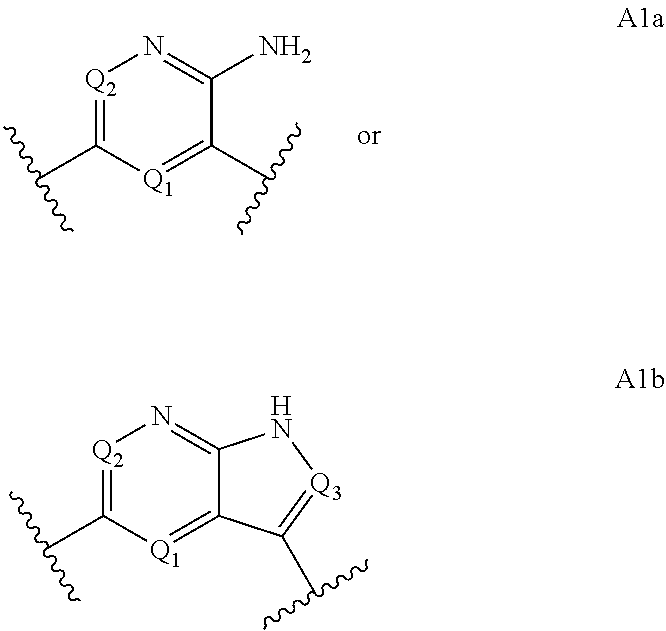Macrocyclic compounds for the treatment of proliferative diseases
a technology of macrocyclic compounds and proliferative diseases, applied in the field of compounds, can solve the problems of reducing the ability of imatinib to compete with atp in the active site of the enzyme, reducing the ability of imatinib to compete with atp, and reducing the ability of imatinib to fight off cell invasiveness and metastasis. , to achieve the effect of treating or inhibiting the cell proliferation, cell invasion, and metastasis
- Summary
- Abstract
- Description
- Claims
- Application Information
AI Technical Summary
Benefits of technology
Problems solved by technology
Method used
Image
Examples
example 1
Synthesis of Compound 1
[0317]
[0318]Compound 1A is a known compound, and the synthesis was described in WO2013132376A1, Page 395, as Example 104.
[0319]Step 1.
[0320]Compound 1A is mixed with neat POCl3 and stirred at room temperature for 30 minutes, then POCl3 is removed in vacuo to give iminochloride 1B.
[0321]Step 2.
[0322]To a solution of 1B in dichloromethane is added 1 C (1.1 mole equivalent) followed by TEA (1.2 equivalent). The resulting mixture is stirred at room temperature for 8 hours. Saturated NH4Cl solution is added, the two layers are separated and the aqueous layer is extracted with DCM three times, and the combined organic phases are dried over Na2SO4, filtered, and concentrated in vacuo. The residue is further purified by chromatography to give the desired product 1.
example 2
Synthesis of Compound 2
[0323]
[0324]To a solution of 1B in dichloromethane is added 2A (1.1 mole equivalent) followed by TEA (1.2 equivalent). The resulting mixture is stirred at room temperature for 8 hours. Saturated NH4Cl solution is added, the two layers are separated, the aqueous layer is extracted with DCM three times, and the combined organic phases are dried over Na2SO4, filtered, and concentrated in vacuo. The residue is further purified by chromatography to give the desired product 2.
example 3
Synthesis of Compound 3
[0325]
[0326]Compound 3-1 is transformed to 3-2 by following the experimental procedures described in patent application WO2013132376A1 for the synthesis of compound 40. Compound 3-2 is transformed to desired product 3 by following the experimental procedures shown for the synthesis of Example 1 in the same patent application.
PUM
| Property | Measurement | Unit |
|---|---|---|
| body weight | aaaaa | aaaaa |
| w/w | aaaaa | aaaaa |
| weight % | aaaaa | aaaaa |
Abstract
Description
Claims
Application Information
 Login to View More
Login to View More - R&D
- Intellectual Property
- Life Sciences
- Materials
- Tech Scout
- Unparalleled Data Quality
- Higher Quality Content
- 60% Fewer Hallucinations
Browse by: Latest US Patents, China's latest patents, Technical Efficacy Thesaurus, Application Domain, Technology Topic, Popular Technical Reports.
© 2025 PatSnap. All rights reserved.Legal|Privacy policy|Modern Slavery Act Transparency Statement|Sitemap|About US| Contact US: help@patsnap.com



